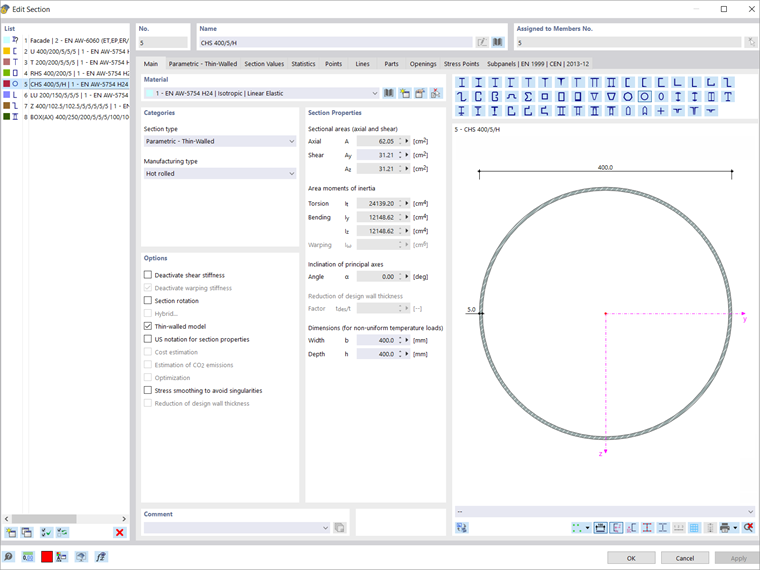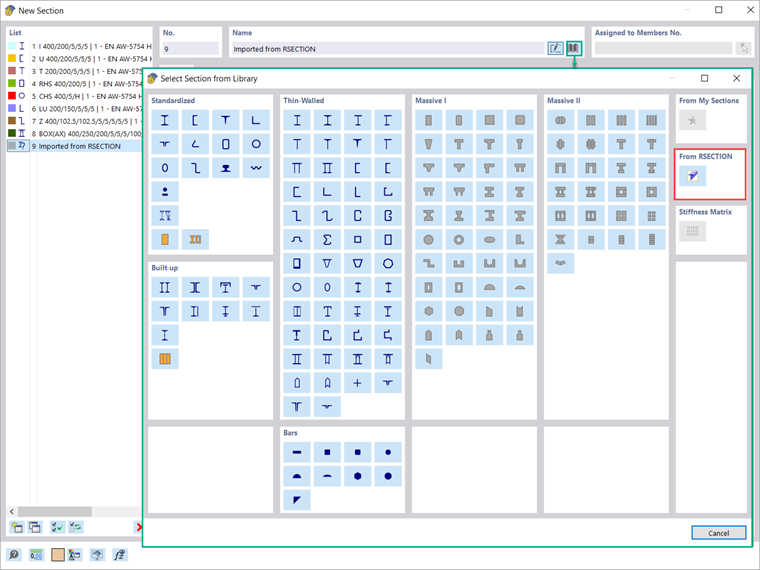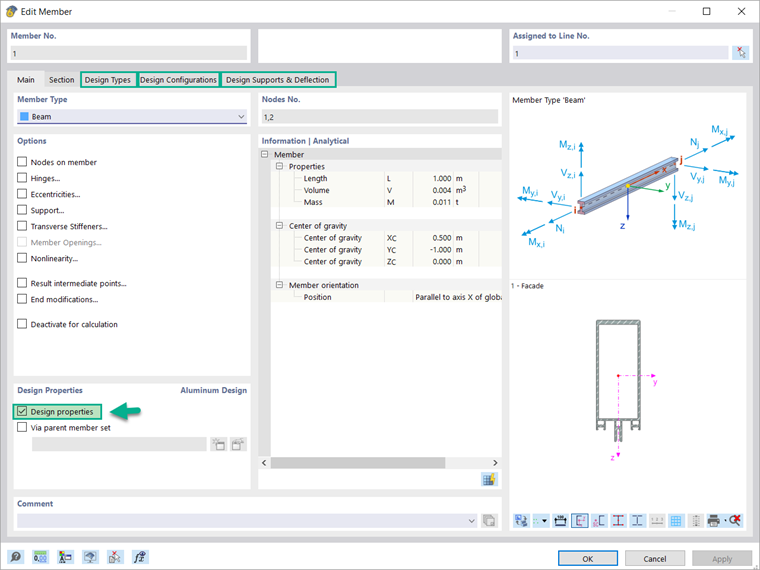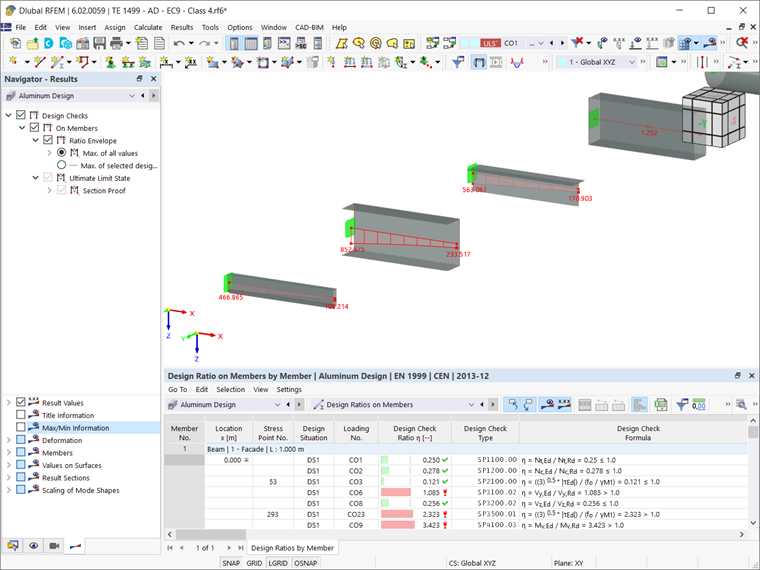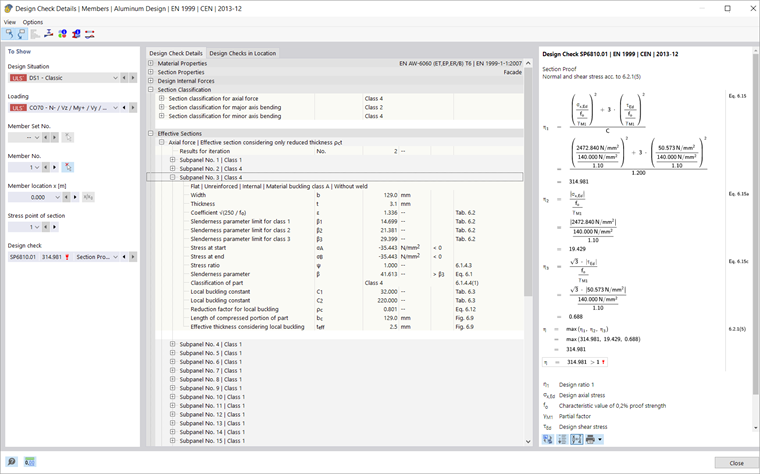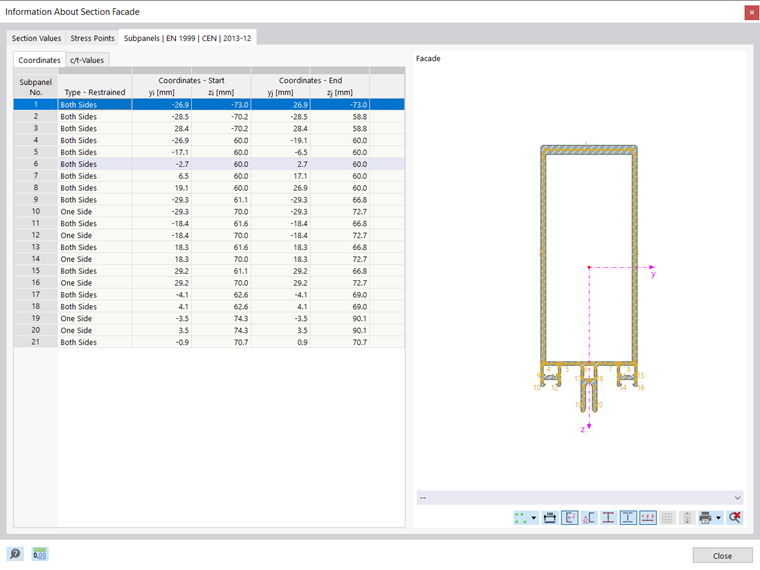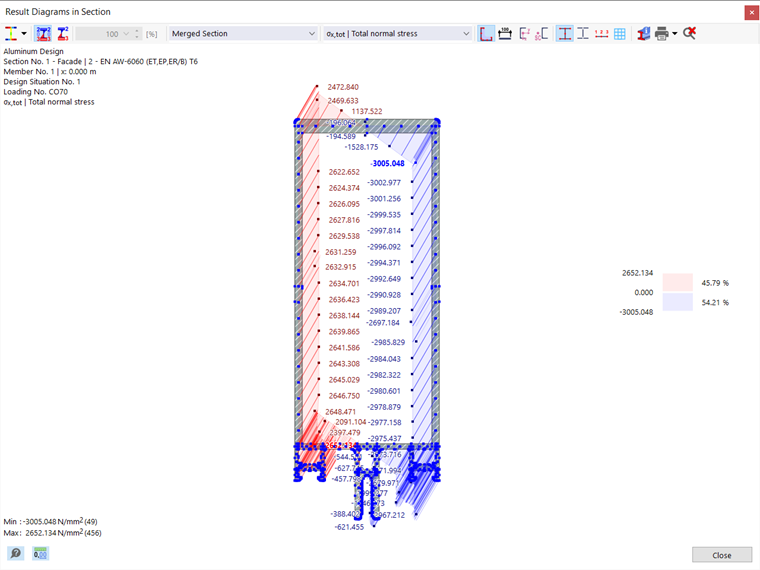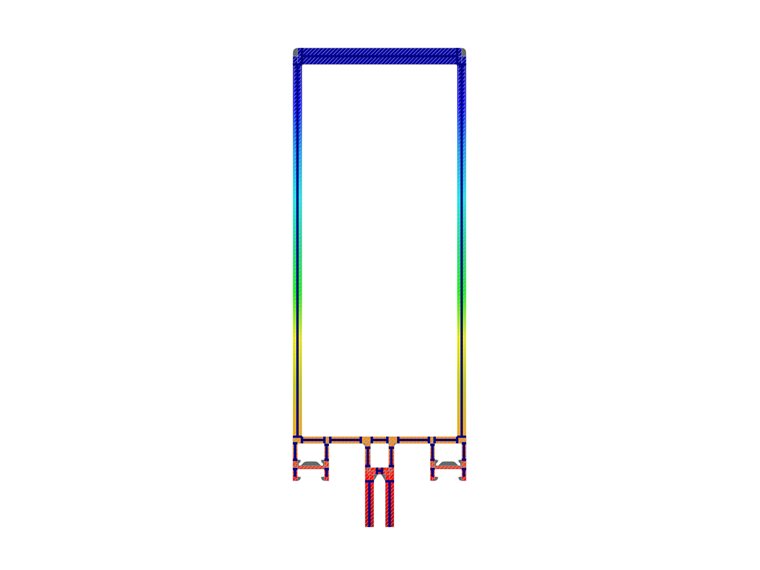A new feature in RFEM 6 is the design of Class 4 aluminum sections according to EN 1999-1-1 [1]. This feature provides the following options:
- Calculation of effective sections for axial force, major-axis bending, and minor-axis bending
- Detailed information about the calculated effective cross-sections, including the results of the individual subpanels, thickness reductions, and the final effective cross-section characteristics used in the design checks
- Graphic representation of effective sections with the option to display various stresses for the current internal forces
- Design checks with consideration of effective cross-sections and effective cross-section properties for the calculation of cross-section resistances
- Verification by stresses according to combined stresses from effective sections for general sections
All previous points are implemented for standardized and parametric sections from RFEM 6 (Image 01) as well as for user-defined sections from RSECTION. You can import the latter into RFEM 6 using the “Import section from RSECTION” option (Image 02).
The detailed procedure for assigning the design-relevant parameters has already been described in the Knowledge Base article
Designing Aluminum Structures in RFEM 6 According to Eurocode 9
. As explained in the article, these parameters can be activated in the “Edit Member” window shown in Image 03. This allows you to define the design types for the aluminum design (such as effective lengths, local section reductions, shear panels, and rotational restraints), the design configurations (both ultimate limit state and serviceability limit state), and the design supports necessary for the design procedure.
Once the aluminum design has been completed, it's interesting to take a look at the results. First of all, the table shown in Image 04 gives you an overview. You can also display the results of the Aluminum Design add-on graphically via the Results tab of the Navigator. For example, you can see the design ratios by member, as well as the design check formulas, the design check types, and their description.
Even more interesting to look at are the design check details shown in Image 05 (available via the Design Check Details icon). They show you some of the biggest advantages of the design presented in this article, such as the calculation of effective sections for axial force, major-axis bending, and minor-axis bending, which are generally difficult to calculate manually.
Please note that even with all the performance optimizations, the calculation of effective cross-sections is an iterative process and a large number of effective cross-sections may need to be calculated. For very complex custom sections with hundreds of stress points, the calculation may take some time.
You can also view further details. For instance, you can see all the information about the section by clicking the “Section information” icon. You can find this icon in the “Design Check Details” window and in the “Aluminum Design” table. In the “Information About Section” window that opens when you click the icon, all information about the aluminum section of interest is organized in relevant sections and available to you as shown in Image 06.
You can use the “Diagram in Section” to see the evaluation of the stresses for all calculated effective cross-sections. As shown in Image 07, this window provides a graphical representation of the resulting stresses for the effective cross-sections including reductions, reduced thicknesses, and calculated stresses. You can choose which results to display.
